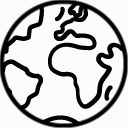

Unsustainable and illegal fishing practices, hydropower dam constructions and industrial pollution – these are some of the environmental hazards that threaten the survival of the Irrawaddy dolphin in the Mekong River. WWF in Cambodia works to conserve the Irrawaddy, and in recent years, dolphin numbers are stabilising. In 2019, H&M Group supported the conservation work, mainly by financing river guards.
In the Mekong River, there are only about 90 individuals of this grey and bulging forehead mammal left. This is why the Irrawaddy dolphin has been placed on the International Union for Conservation of Nature’s (IUCN’s) critically endangered list.
Today, the remaining Mekong Irrawaddy populations are found on a 190-kilometre stretch of the river between the Cambodian city of Kratié and the border with Laos.
As these dolphin populations are confined to freshwater systems, they are extremely vulnerable to human activities. In the past sixty years, numbers have declined dramatically. Many dolphins have become entangled accidentally in gillnets, drowning as a result of fishing practice. They have also suffered from the degradation of their habitat by contaminants, pollutants and the upstream dam constructions along the Mekong.
Protecting the Irrawaddy dolphin is crucial for the overall health of the Mekong river, where an estimated 1100 species of fish live. To the people of Cambodia, the dolphin is a magical creature with great cultural significance. It is also an important source of income and jobs for communities involved in dolphin-watching ecotourism.
Working to reverse the negative trend
WWF aims to stop the decline of dolphin populations in Asia and South America by 2030 and to have restored and doubled the most affected populations by then.
For more than two decades, WWF has worked with researchers and local authorities to monitor and protect Irrawaddy dolphin numbers in the region. While there were about 200 dolphins in the Mekong River in 1997, by 2015 numbers had fallen to around 80. However, the past years’ inventories, with the most recent released in 2020, indicate that numbers have been stabilizing to around 90 individuals.
In 2019, and as part of a long-term partnership on water stewardship, H&M Group donated funds to support WWF’s conservation efforts. The work includes raising awareness of the plight of the river dolphin, river guard activities including the removal of gill nets, and the promotion and implementation of non-hydroelectric renewable energy solutions.
”The threats to the Irrawaddy dolphin as well as to other species in the Mekong River are severe and real, and we need to bring all efforts and resources possible to the task of saving them. This is why it is so important when companies like H&M Group engage – both in conservation issues and in pushing for stronger policies on renewable energy, as it is all connected”, says Stina Nyström, Programme manager Marine & Freshwater at WWF Sweden.
Hopefully, the Mekong River’s Irrawaddy dolphin population is on the way to recovery. But the fight must go on to ensure its survival.
